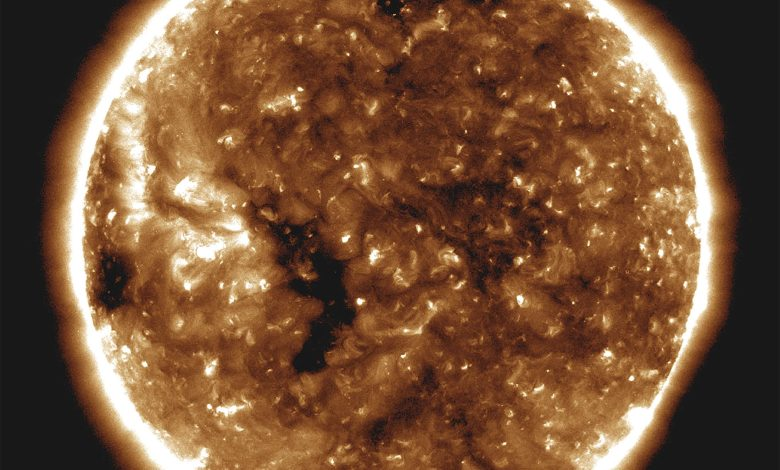“Not yellow” .. An astronaut reveals the true color of the sun

People widely believe that the color of the sun is yellow, according to what it looks like in the Earth's atmosphere, but it is not its true color, as confirmed by a former NASA astronaut.
On Earth, the sun appears to be yellow, and sometimes turns red-orange at certain times of the day.
However, in fact, the true color of the sun is white, which was confirmed by former NASA astronaut Scott Kelly, and explained the strange physics game behind the phenomenon.
He explained that the sun emits a full spectrum of light, consisting of every color of the rainbow. The reason we see our nearby star in yellow is mainly due to the phenomenon of refraction of light.
One clue to this phenomenon is that while the sun appears yellow on Earth, once it leaves our planet's atmosphere, it will appear white, due to how our eyes see color.
In response to a tweet talking about this phenomenon, Kelly said: "I can confirm this space fact."
According to NASA, when sunlight, which consists of a full spectrum of light, passes through the atmosphere, blue light, which has a shorter wavelength, is scattered more efficiently than red light.
This is why humans do not see blue light when it passes through the atmosphere.
At the same time, all the wavelengths of visible light passing through our atmosphere are so diminished that the light reaching our eyes does not immediately saturate the cone receptors.
NASA wrote: "This allows the brain to perceive the color from the image with a bit of blue-yellow.
And while it doesn't affect what our eyes see, all X-rays and gamma rays are filtered out before they get close to Earth.
"Most UV radiation is absorbed by stratospheric ozone (over 10 km above the Earth's surface) and most infrared radiation is absorbed by water vapor and other molecules with non-zero dipole moments," NASA says.
This effect also explains why sunrises and sunsets appear red. During this time, the light travels further, because more blue light is scattered and made a much larger proportion of the longest wavelength (red) in our eyes.
NASA also noted that although sunlight consists of every color in the spectrum, in space, the light entering our eyes is so strong that the three colored cone cell receptors, which measure red, green and blue, are completely saturated and thus appear white.
And what we think of as color actually depends on the frequency of the light, as Christopher Bird, assistant professor of physics at West Texas A&M University, notes: “The whole sun and all its layers are glowing.”
Speaking to Live Science, he said: "The color of the sun is the spectrum of colors found in sunlight, which arises from a complex interaction of all parts of the sun."
He pointed out that "each pure color has a distinct wavelength", with red having the lowest frequency and violet with the highest frequency of visible light.
When we direct solar radiation through a glass prism (a tool used to study white light and manipulate the colors that make it up), we see all the colors of the rainbow come out from the other end, which is also all the colors visible to the human eye, which also proves that the sun is white.
Professor Beard added: "The chromatic components of sunlight are very close enough to be present in equal amounts, so it is more correct to say that the sun is white rather than saying it is yellow, orange or any one pure color."
Source: Express
https://shahbapress.net/archives/28090?fbclid=IwAR1o5QXOEbsXuu7KdeBqoVSgbg3M0ny1K36GIujadW39tY2ocmR9OIxvtwE

